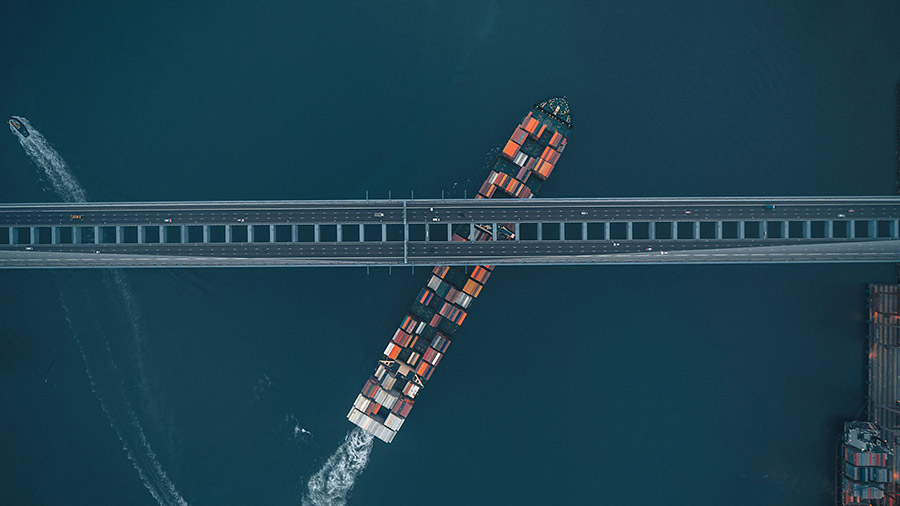China’s Catalogue for Prohibited and Restricted Export Technologies: Latest Revisions
China’s export control scheme is evolving, as demonstrated in the recently amended Catalogue for Prohibited and Restricted Export Technology. In this article, we introduce what the Catalogue is and summarize what has been changed.
On December 21, 2023, the Ministry of Commerce (MOFCOM), in conjunction with the Ministry of Science and Technology (MOST), published the revised edition of the Catalogue for Prohibited and Restricted Export Technologies (the “Catalogue”). Set to come into effect from the date of its promulgation, this version supersedes the 2020 edition.
The revised Catalogue serves as a guide and key legal instrument for both domestic and foreign enterprises, offering insights into the wide range of items and technologies eligible or ineligible for export. In the context of this new version, special global attention has been placed on the regulation of technologies related to the extraction and refinement of rare earths.
What is the Catalogue for Prohibited and Restricted Export Technologies?
The Catalogue is a government-issued document designed to regulate the export of technology, ensuring orderly management, fostering foreign economic and technological cooperation, and safeguarding the economic and technological interests of the state.
According to the document, the term “technology export” refers to the transfer of technology from China to a foreign Country by trade, investment, or economic and technical cooperation.
With such premises, the Catalogue defines two categories – “prohibited” and “restricted”. Technologies not listed in the Catalogue are deemed as “free export”. Different regulations apply to each category. In particular:
- The “prohibited” category enunciates all the items that shall not, in any case, be exported.
- The “restricted” category pertains to items that are subject to license management, implying that they can only be exported with the issuance of a
- Export of technologies deemed as “free export” do not require licensing, but are subject to contract registration management. In other words, these items require the completion of contractual registration procedures through the designated website as part of the export process.
Background of the Catalogue
The Catalogue is a pivotal component within China’s export framework. Since its establishment, the Catalogue has played a crucial role in safeguarding China’s economic and national security and fostering foreign economic and technological cooperation.
Subject to revisions in 2001, 2008, and ultimately in 2020, this document has consistently adapted to align with the latest international developments. The 2023 modification represents routine adjustments aimed at optimizing the business environment, enhancing China’s technological competitiveness, and regulating the export of sensitive technologies.
This recent revision, brought about significant changes compared to its prior version, featuring a substantial reduction in listed items, revisions to existing technologies, and the addition of new ones.
Key amendments in the 2023 version of the Catalogue
After soliciting opinions from relevant departments, industries, and the public, the revised Catalogue witnessed a reduction in technical items from 164 to 134. This was achieved through the deletion of 34 technical items, the addition of 4 new ones, and the modification of 37, as stated by MOFCOM. The key changes include:
- Removal of 6 technology items banned for export, such as green plants production regulator manufacturing technology.
- Removal of 28 technology items restricted from export, such as medical diagnostic instrument and equipment manufacturing technology, and target feature extraction and identification technology.
- Addition of 1 new item banned for export, specifically, cell cloning and gene editing technologies for human use.
- Add 3 new items for restricted export, covering crop hybrid advantage utilization technology, bulk material loading and unloading conveying technology, and the Light Detection and Ranging system (LIDAR).
- Adjustment of control points and technical parameters for 37 technical items, comprising 6 export-prohibited technologies such as the extraction, processing, refining, and use of rare earth, as well as resources and production of Chinese herbal medicines. Additionally, 31 export-restricted technologies, including cultivation and breeding technology of cash crops, non-ferrous metal metallurgy technology, and design and construction technology of large-scale high-speed wind tunnels, underwent modifications.
These changes signify a comprehensive effort to refine the Catalogue. This strategic adjustment ensures a balance between export control measures and technological progress.
Media attention on rare earths
In November 2023, China initiated a requirement for rare-earth exporters to disclose the specific types of metals they export and their intended destinations. Subsequently, a new law was implemented, necessitating advanced approval for the export of gallium, a critical component in semiconductors, and graphite, a material essential for electric vehicle batteries, as reported by Nikkei Asia.
This response was triggered by limitations imposed by the US and its allies on the export of semiconductors and related technologies to China.
While China is not the only producer of rare earth, accounting for 60 percent of global production, it maintains a dominant position in processing, contributing to 90 percent of global refined output.
The increased scrutiny on rare earth materials extends also to the Catalogue, including a ban on the export of technology for producing rare earth magnets, in addition to the existing ban on critical materials’ separation technology. These measures have attracted considerable media attention, considering the pivotal role these materials play in the production of magnets for applications in electric vehicles, wind turbines, and electronics.
With China still the sole country with the necessary expertise and operational facilities for the complete process of separation, processing, and manufacturing rare earth-related products, relevant businesses need to come out with proactive plans for mitigating the impacts of the revised export control scheme.
Key takeaways and 2024 outlook
Against the backdrop of strategic competition between China and the US, and amidst the rapid growth of China’s high-tech industry, the Chinese government has strategically adapted its export control measures to safeguard both national security and development interests.
The 2023 Catalogue’s amendments, which reduced the list of items to 134, suggest a trend toward further liberalization of exports in a positive attempt to “promote openness and cooperation”, as declared by MOFCOM. This aligns with the observation previously made for the 2020 Catalogue of Technologies Prohibited or Restricted from Export, highlighting the positive implications for foreign stakeholders.
However, recognizing the need for detailed technical requirements in high-tech fields, especially those where the US and China compete, is evident in the case of technologies for the extraction and refinement of rare earth: the choice to enhance control over crucial resources such as the latter can be interpreted as a strategic reaction to recent shifts in global economic strategies, particularly those from the US.
The adjustments to the Catalogue reflect China’s dual objective of strengthening international technology trade cooperation and optimizing the business environment. Guided by the national security concept, these changes also address concerns related to the export control of emerging technologies, aligning with China’s commitment to safeguarding its economic interests and maintaining dominance in critical domains.
Looking ahead, predictions about further revisions in 2024 are contingent on significant global events, and the impact of such on the balance of economic trade. The upcoming US elections, for instance, especially in the eventuality of a new Trump mandate, hold the potential to further reshape the dynamics of economic cooperation between the two nations. This is especially relevant given the existing disruption caused by the current intense competition. Should such a shift occur, China may consider additional measures and changes to its export policies to safeguard national security interests.
Companies are therefore prompted to carefully evaluate their operations or investments associated with technologies restricted by China, taking into consideration the potential risks associated with possible shifts in the international regulatory landscape that could impact future restrictions.
About Us
China Briefing is written and produced by Dezan Shira & Associates. The practice assists foreign investors into China and has done so since 1992 through offices in Beijing, Tianjin, Dalian, Qingdao, Shanghai, Hangzhou, Ningbo, Suzhou, Guangzhou, Dongguan, Zhongshan, Shenzhen, and Hong Kong. Please contact the firm for assistance in China at china@dezshira.com.
Dezan Shira & Associates also has offices in Vietnam, Indonesia, Singapore, United States, Germany, Italy, India, and Dubai (UAE). We also have partner firms assisting foreign investors in The Philippines, Malaysia, Thailand, Bangladesh.
- Previous Article WeChat consente agli stranieri di pagare in Cina con carte estere
- Next Article The New Hong Kong-Mainland Reciprocal Enforcement of Judgments Regime Took Effect on Jan 29





























